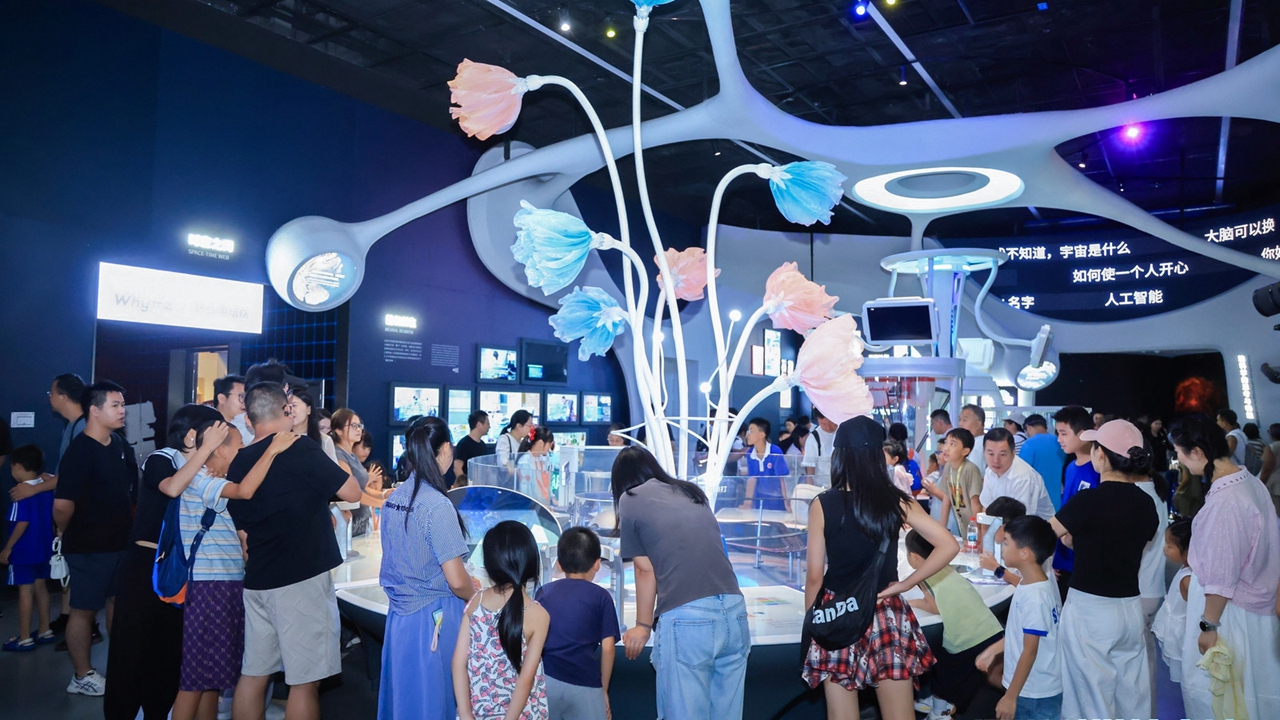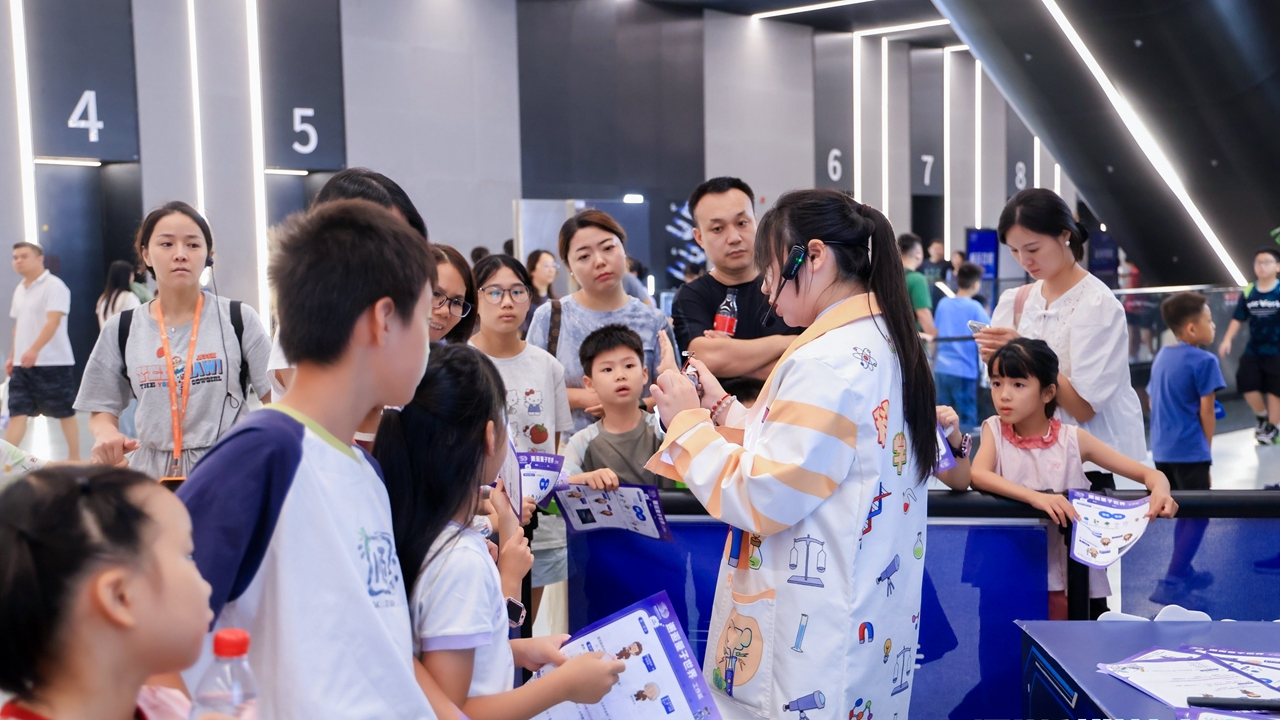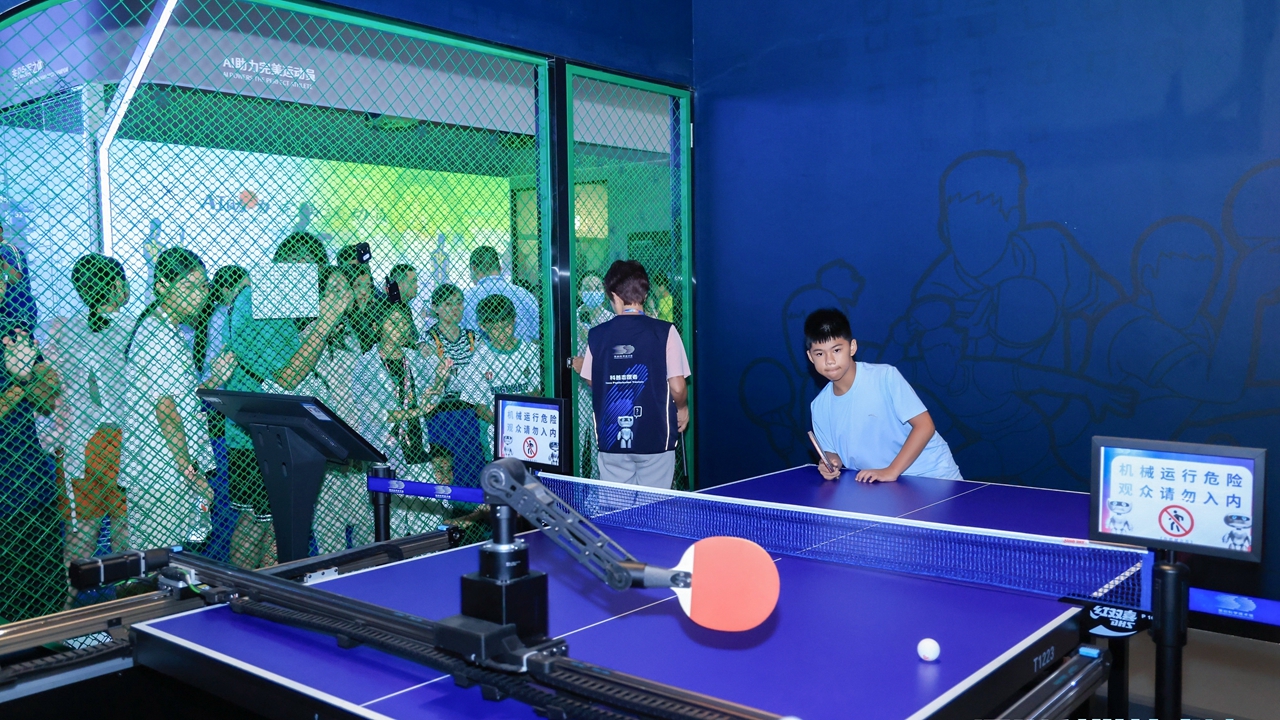Shenzhen Science & Technology Museum welcomes over 2m visitors
Writer: Windy Shao | Editor: Lin Qiuying | From: Original | Updated: 2025-10-09
The Shenzhen Science & Technology Museum has attracted over 2 million visitors since opening May 1, the museum management said Oct. 7.
In just over five months, the museum has become a “phenomenal” landmark in China’s science popularization landscape, setting a new benchmark for the rapid rise of public science venues in China.
A new gateway to digital civilization
As the world’s first museum dedicated to digital civilization, the museum takes “communication technology” as its core theme and “Digital Civilization, Innovative Future” as its guiding concept. The museum offers new ideas for innovation and thematic development in China’s science museum sector. Visitors are attracted by exhibits at the museum. Courtesy of the museum
Visitors are attracted by exhibits at the museum. Courtesy of the museum
The venue features 24 themed exhibition zones and 950 innovative exhibits, ranking among the nation’s best in both quantity and creativity. Notably, 80% of exhibits offer immersive, interactive experiences that blend science, technology, society, art, and culture— transforming traditional displays into deeply engaging journeys of discovery.
Many exhibits are closely aligned with Shenzhen’s signature “20+8” industrial clusters, combining innovation with local relevance. Additional facilities, including a planetarium, observatory, special-effects cinema, and study-tour spaces, further enrich the city’s science education ecosystem.
Prof. Zheng Yongchun, director of the museum, told Shenzhen Daily in an earlier interview that he is focused on embedding what he calls “Shenzhen DNA” in the museum. “Since this is a science museum in Shenzhen, a city synonymous with innovation, it must showcase Shenzhen’s science, technology, education, and innovation,” he explained.
Energizing regional tourism and culture
Since its opening, the museum has held over 4,400 science education events, building a vibrant educational framework that promises “daily experiences, weekly updates, and monthly themes.” Activities cover a wide range of cutting-edge fields, from artificial intelligence and life sciences to aerospace and defense technology.
The museum has introduced creative public events such as China’s first “science wedding ceremony”on Qixi Festival and a “Starry Mid-Autumn” astronomy-themed program. Embracing interdisciplinary learning, the museum tailors its programs to diverse audiences through initiatives like live science shows and one-square-meter mini-labs.

Young visitors watch a science experiment at the museum.
On weekends and holidays, the museum's parking lots are filled with cars from across the country. Visitor data show expanding influence beyond the Pearl River Delta — attracting audiences from Hong Kong, Macao, Taiwan, and provinces including Jiangxi, Hunan, and Xinjiang, as well as tens of thousands of foreign visitors.
“This museum is amazing because it’s interactive. You have many games, and you can see how technology works,” Juan Guerra from Ecuador told Shenzhen Daily.
Jessica Theodora from Indonesia added, “This museum really reflects Shenzhen — it’s innovative, digital, and full of advanced technology.”
With facilities designed to serve over 30,000 visitors daily, the museum has integrated dining, cultural creativity, and education into a thriving science-tourism hub. This has significantly boosted the cultural tourism economy in northern Shenzhen, where overnight visitor numbers in Guangming District rose 75% during the summer, and tourism spending increased 80%.
Nurturing future innovators
The museum is also a key player in advancing Shenzhen’s “science, education, and talent integration” reform pilot. As a citywide hub for science education, it plays a vital role in cultivating future innovators.

A visitor plays table tennis against a robot at the museum.
Supporting the city’s “Half-Day a Week Science Education” initiative, the museum has partnered with over 100 schools and district education bureaus to promote hands-on science learning. In September, it signed strategic cooperation agreements with Guangming and Futian education bureaus to train science teachers and develop customized curricula. More than 110,000 students in Guangming District will participate in off-campus science programs at the museum.
Behind the milestone of 2 million visitors lies both the public’s enthusiasm for science and the city’s commitment to education and innovation. The museum is becoming a national benchmark for large-scale science venues — one that embodies Shenzhen’s pioneering spirit and global vision.